Space
Sign up for our newsletter
We summarize the week's scientific breakthroughs every Thursday.
-
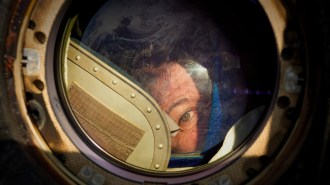 Space
Space‘Space: The Longest Goodbye’ explores astronauts’ mental health
The documentary follows NASA astronauts and the psychologists helping them prepare for future long-distance space trips to the moon and Mars.
-
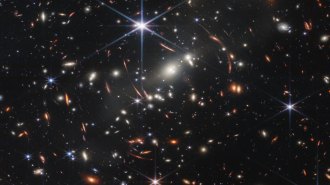 Space
SpaceDid the James Webb telescope ‘break the universe’? Maybe not
There’s no need for strange new physics to explain anomalously bright, massive galaxies seen by JWST, Hubble data suggest.
By Adam Mann -
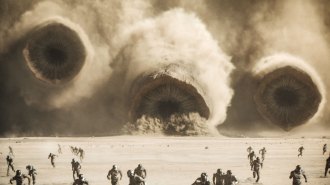 Planetary Science
Planetary ScienceThe desert planet in ‘Dune’ is plausible, according to science
Humans could live on the fictional planet Arrakis from Dune but (thankfully) no giant sandworms would menace them.
-
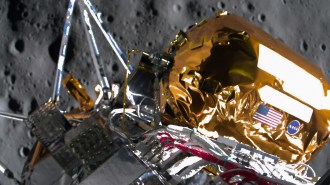 Planetary Science
Planetary ScienceOdysseus’ historic moon mission comes to an end
Odysseus downloaded data from all payloads before going to sleep February 28. The cold lunar night proved fatal to efforts to reawaken the lunar lander.
By Adam Mann -
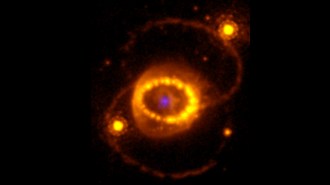 Astronomy
AstronomyJWST spies hints of a neutron star left behind by supernova 1987A
Signs of highly ionized atoms in dusty clouds at SN 1987A’s explosion site suggest a powerful source of X-rays — likely a neutron star — lurks within.
By Adam Mann -
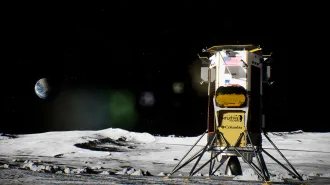 Space
SpaceThe first U.S. lunar lander since 1972 touches down on the moon
Odysseus, the first spacecraft to land on the moon since NASA’s Apollo 17, ended up tipped on its side but it appears to be operating OK.
By Christopher Crockett and Adam Mann -
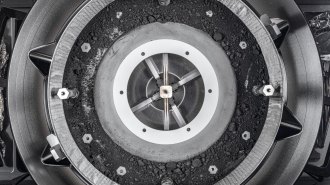 Planetary Science
Planetary ScienceNASA’s OSIRIS-REx nabbed over 120 grams of space rocks from asteroid Bennu
After being stymied by two stuck screws, NASA finally accessed a trove of Bennu asteroid bits. Mission scientist Harold Connolly tells what’s next.
By Adam Mann -
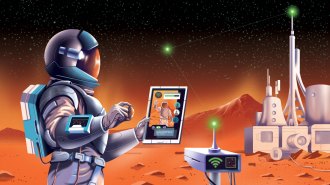 Space
SpaceHow to build an internet on Mars
Future Red Planet inhabitants will need new ways to connect, including improved relay networks and an offshoot internet.
By Payal Dhar -
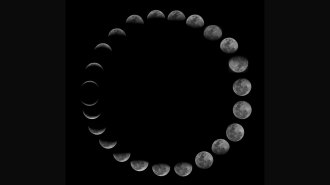 Space
SpaceHow ‘Our Moon’ shaped life on Earth and human history
Science News reviews Rebecca Boyle’s new wide-ranging book, which tells the story of the moon and its relationship with the inhabitants of Earth.
By Shi En Kim -
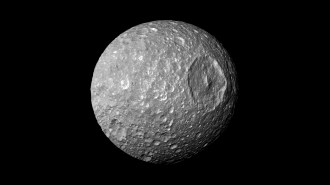 Planetary Science
Planetary ScienceSaturn’s ‘Death Star’ moon might contain a hidden ocean
A fresh look at Cassini data reveals slight changes in the tiny moon’s orbit that suggest the presence of a vast ocean beneath the satellite’s icy shell.
By Adam Mann -
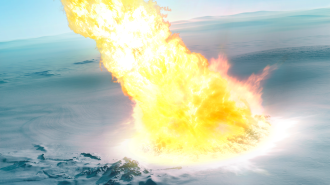 Planetary Science
Planetary ScienceAn asteroid may have exploded over Antarctica about 2.5 million years ago
Tiny spherules of rock found in Antarctic ice may point to the oldest known “airburst,” or midair disintegration of an incoming asteroid.
-
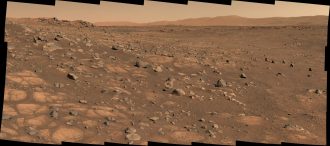 Planetary Science
Planetary ScienceBacteria that can make humans sick could survive on Mars
Experiments suggest that common illness-causing microbes could not only survive on the Red Planet but also might be able to thrive.
By Adam Mann